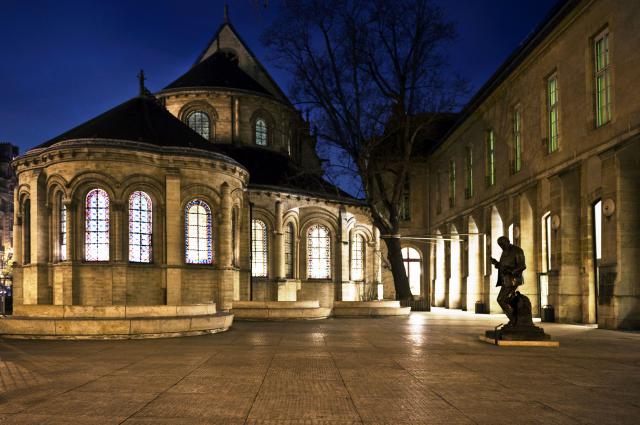

The Museum of Arts and Crafts hosted the exhibition "Les dessous des grands travaux", a thematic installation on geotechnics proposed by the French Committee of Soil Mechanics and Geotechnical Engineering (CFMS) and its partners. Presented for the 18th International Congress of Soil Mechanics and Geotechnics "Challenges and Innovations in Geotechnics" held in Paris from 2 to 5 September 2013. The installation is a first in France and abroad.

© CNAM
« Les dessous des grands travaux » deposit the know-how of the engineering offices and French companies in the field of geotechnical engineering. Housed in two separate locations in the Museum of Arts and Crafts, exhibition held in the News Room and two spaces in the Construction Collection, the Workshop and the fourth period.
This virtual exhibition includes the same contents as the original exhbition. It is proposed by CFMS, Syntec Ingénierie, FNTP, USG and ISSMGE.
At the entrance of the newsroom were presented the basic elements to understand the field of geotechnics. Geotechnics is an applied science which studies the practice of the terrestrial subsurface on which the man intervenes for its development or its exploitation, during public works operations (civil engineering, building, quarries), groundwater (exploitation, drainage) and prevention of natural hazards. An empirical technique known to all civilizations, it evolves constantly according to our needs, our knowledge and our means. The principles of geotechnics are simple, but their expression is complicated because they derive from geology and mechanics, observation, experimentation and calculation, inductive reasoning and deductive reasoning. The geotechnical study is a complex operation on which depends largely the quality of the work concerned. His general approach consists first of all in constructing the structural model of the site, in characterizing and studying the natural and induced phenomena of which he is and will be the seat; finally, to propose practical solutions to the geotechnical problems posed by the specific adaptation of the structure to the site.
The works presented in the newsroom illustrated the difficulties that the geotechnical engineer must solve in order to build structures on lands with extreme geological conditions. In this space of 50 m², seven types of building sites, documented by texts, photographs, tools and videos were presented:
In the workshop of the Construction collection, the visitor could discover innovative geotechnical techniques that allowed an important technological leap:
The educational activities proposed by the museum's scientific mediators demonstrate that these techniques involve the soil in place to its own stability. Moreover, they respond perfectly to the economic and environmental problems of our society.
The construction of the Rion-Antirion bridge, shown in detail on panels, is an example of an exception. It illustrates all the geotechnical skills, from the design to the realization of a work built under extreme conditions.
The space of the fourth period of the collection, devoted to building techniques from 1950, hosted the thematic installation on geotechnics. The explanatory panels and the film on the site of the Duplex A86 tunnel show the complexity of building in heterogeneous geological terrain.
The model of the tunnel boring machine for the construction of the Madrid metro, a key piece of the Construction collection, presents its structure and operating principle.
Through these examples, the exhibition explores all the innovative techniques used in geotechnics: geology, hydrogeology, geomechanics, building and civil engineering, numerical modeling, computer-assisted calculations.
The visitor was able to understand the importance of the undersides in the design of the large structures on which their stability rests.